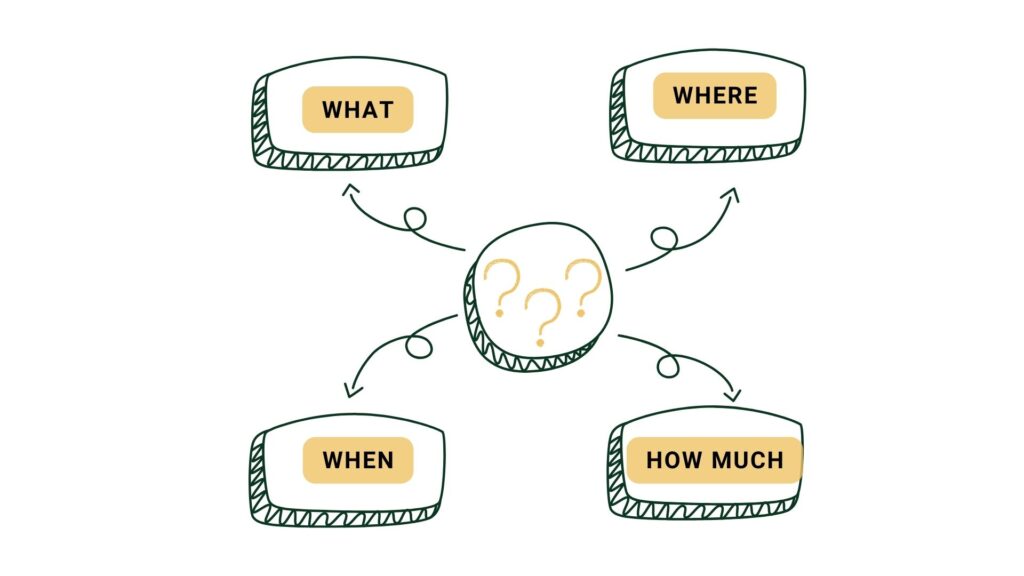Enhancing your career as an IT help desk professional requires a commitment to ongoing learning. Here are seven helpful troubleshooting tips for help desk beginners that can hopefully boost your problem-solving prowess:
Have good listening skills
Ask critical questions
Take notes
Make sure you have a clear problem definition
Be patient; troubleshooting is an iterative process
Use the root-cause analysis model
Prioritize using Pareto principle
Help desk professionals are the unsung heroes who come to the rescue when technical issues arise. Being a successful help desk technician requires a knack for problem-solving. Thus, the more you know about the troubleshooting process, the better prepared you’ll be to effectively diagnose and resolve technical issues.

Why Troubleshooting Skills Matter For Help Desk Professionals
As a help desk professional, you are the go-to person for customers and colleagues when they have technical questions or issues. This includes requests for information, questions about how to perform a task, complaints about a product or feature, and problems that prevent them from using hardware or software.
You need to have good troubleshooting skills for three main reasons:
One, in most cases, you won't have the time to perform an in-depth analysis of the problem, but solutions are still expected of you quickly. Customers can't bear waiting long for solutions.
Two, your ability to quickly and accurately diagnose problems is essential in providing excellent service, satisfaction, and trust with customers. All customers have the choice of multiple service or product providers they could opt for, so it's necessary that any hiccups are solved efficiently in order to ensure their continued loyalty towards the brand you work for.
Last but not least, troubleshooting is a process of elimination and it can be difficult if you don't have the right tools or training to identify the root cause of a problem. And without proper diagnosis, you are more likely to give superficial fixes that guarantee the problem to return again.
Without doubt, troubleshooting skills are crucial in order to be successful as a help desk professional, and there are several tips you can use to sharpen your abilities.
Note: First of all, these tips are meant to supplement, and not replace any instructions or advice that your employer may have already given you.
Troubleshooting Tip #1: Have Good Listening Skills
Avoid the danger of not listening carefully, or not giving the user enough time to explain the problem.
Make sure to pay attention to causal if-then statements like, "If I click this button, then nothing happens", or "When I open this application after Office, it crashes," or “If I try to adjust the monitor, then the screen goes blank.” These types of statements offer valuable clues and give you context as to what might be causing the problem.
Listening is key when it comes to troubleshooting any problem, so make sure not to jump ahead and miss out on important pieces of information that could improve your chances of finding an effective solution.
Be sure to restate what the customer said in your own words. That way, they can be confident that you have a good grasp on their issue and will be able to effectively address it. Avoid parroting - repeating what they said in the same exact words doesn't demonstrate true understanding.

Troubleshooting Tip #2: Ask Critical Questions
It is not possible to have a good thinker and a poor questioner. Ask questions.
Here is an example snippet taken from the book by Fried Beisse for help desk professionals:
End-user description: I don’t know what happened, but the program doesn’t work. I wonder if it is a defective program or if I am doing something wrong.
Help Desk: Let me make sure I understand. The program used to work, but now it doesn’t?
End-user description: No, I just got the program installed, and it doesn’t start up right. You would think they wouldn’t sell this stuff until it operates correctly.
Help Desk: So you installed the program following the instructions in the manual, and when you double-click the program icon, the program doesn’t run at all?
End-user description: Well, the box on the screen asks me for a file to open, but there are no files listed. Can’t the program find its own files?
Help Desk: So the program opens a window and starts to run, but when the Open Files dialog box appears, the file list is empty?
As you can see, asking questions drives your thinking forward and help you get clarity on what the customer is experiencing and understanding the context of their issue.

Troubleshooting Tip #3: Take Notes
Writing down key information will help you remember and stay focused on the task at hand, as well as prevent any necessary backtracking in case you forget something crucial along the way.
Additionally**, keeping a detailed record of all the steps of troubleshooting attempts can be extremely helpful when escalating an issue to another technician or management**. Not only does this document any progress that has been made in solving the problem, but it also makes it easier for another technician to pick up from where you left off.

Troubleshooting Tip #4: Make Sure You Have A Clear Problem Definition
Before you can start troubleshooting, you need to make sure that the problem is properly defined. A clear understanding of what the problem is (or isn't) will make your diagnosis more targeted and effective.
Have you ever heard of the common problem-solving adage that goes: "A problem well stated is a problem half solved. "
Before you jump into action mode, take a step back and get your ducks in order, for if you state a problem clearly, you have already solved half of it. Here are four components of a problem statement:
What: A description of what happened (that shouldn't have) or didn't happen ( that should have)
Where: Where was the problem found. This could be a point in the process or a point on the defective product.
When: When was the problem first found or when did it start
How much: What is the frequency of the problem? Does it happen all the time or only sometimes?
Try not to include information about why or how the problem happened in your problem statement. This information is often premature and based on inaccurate assumptions. What's the point of diagnosis if you already know the so-called root cause?

Troubleshooting Tip #5: Be Patient
Troubleshooting is the process of defining, diagnosing, and solving computer problems. It is rarely an easy task and can require several attempts.
You may find yourself following one set of steps for a time, only to loop back and take an entirely different path. During this process, you will inevitably face some false starts, going back and forth, or temporary roadblocks that can be discouraging - but don't worry! They are all part of the process, and it is important to remain confident and accepting despite any difficulties that may arise.
However, just because troubleshooting is an iterative process doesn't mean you should use a shotgun approach to problem-solving. Don't just try different things at random when you're troubleshooting. This won't help you solve your problem because you are not chasing ghosts. You need to have a plan and focus on the most likely causes of the problem. This will increase your chances of success.

Troubleshooting Tip #6: Use The Root-Cause Analysis Model
Root-cause analysis is a problem-solving method that enables you to identify and address the underlying causes of a problem. It is a "drilling down" process that takes a broad problem definition and asks an ongoing chain of "why" questions until theories or hypotheses about the root problem are diagnosed.
The goal of this model is to get rid of guesswork and make sure that the solution(s) are given to the real cause(s) instead of wasting time on providing customers with solutions that only address the symptoms.
Root-cause analysis is composed of eight steps that are divided into diagnosis and solution states.
The first four steps (identified in the diagnosis stage) are all about defining and narrowing down the issue to its root cause, while the last four steps (in the solution stage) are focused on fixing that problem by implementing corrective actions and preventing it from happening again.
By following this model, you can more efficiently and accurately troubleshoot any problem.

Troubleshooting Tip #7: Prioritize Using Pareto Principle
When troubleshooting, it can be overwhelming to determine which solutions to tackle first when there are multiple possible causes.
To make the most of your time and effort, the Pareto Principle or 80/20 rule is an effective tool to help you prioritize. It advocates that 80% of all problems can be solved by addressing the top 20% of potential causes, meaning those likely root causes must be identified and resolved first before tackling any others.
Although this isn't to say that other causes should be ignored, focusing first on the major contributors to a problem will ultimately provide quicker yet still reliable results.
Final Thoughts
Whether you work on a help desk or are simply looking to start your career in IT, understanding customer service is key. By following these troubleshooting tips, you can be sure to provide the best possible experience for your customers.
And if you're looking to learn more about help desk support, check out this course for help desk beginners from LinkedIn Learning by Jason Ruediger.